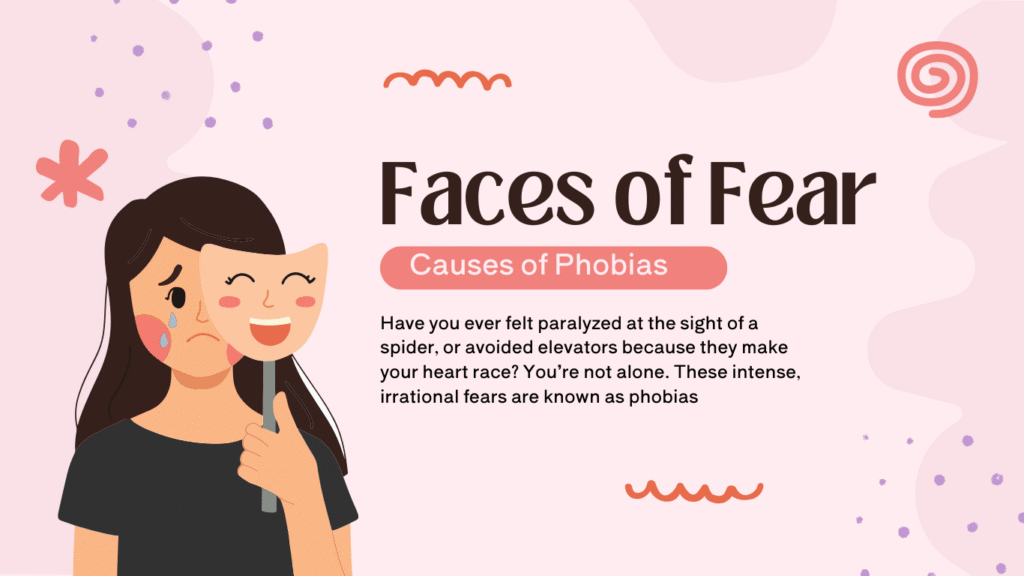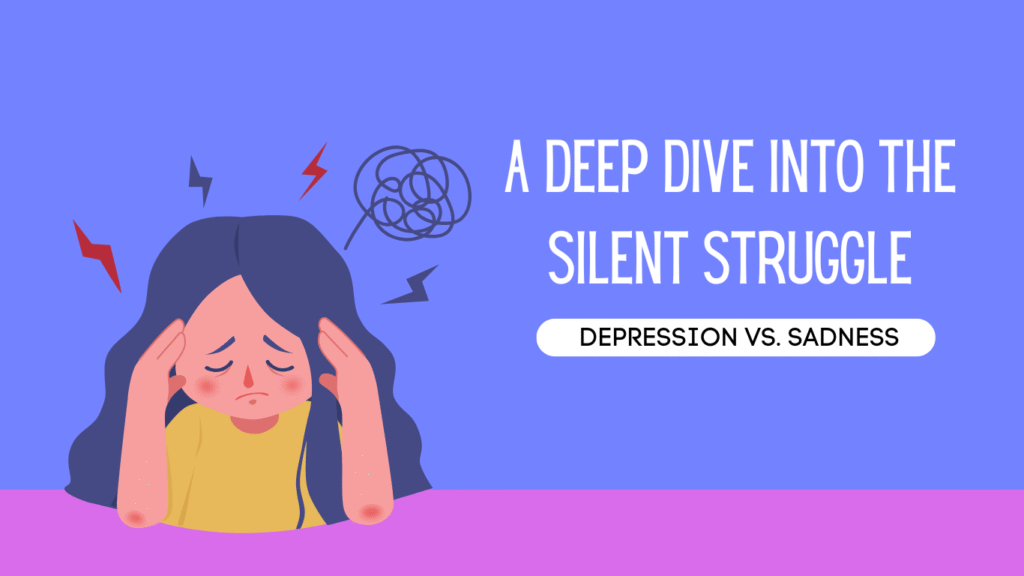Introduction
Have you ever felt paralyzed at the sight of a spider, or avoided elevators because they make your heart race? You’re not alone. These intense, irrational fears are known as phobias, and they affect millions of people globally. Phobias go beyond typical fear — they can disrupt daily life, relationships, and personal well-being. In this detailed guide, we’ll break down everything you need to know about phobias — types, causes, symptoms, and most importantly, how to overcome them.
What Are Phobias?
Clinical Definition
A phobia is an anxiety disorder characterized by an excessive and irrational fear of an object, situation, or activity that poses little to no actual danger.
How Phobias Differ from Normal Fears
Everyone has fears — it’s part of being human. But phobias are intense, persistent, and often lead to avoidance behaviors. Unlike mild fears that cause discomfort, phobias trigger panic attacks, sweating, rapid heartbeat, or even nausea just from the thought of the feared trigger.
Types of Phobias
Specific Phobias
These involve fear of particular objects or situations (e.g., snakes, flying, heights).
Social Phobia (Social Anxiety Disorder)
This is the fear of social situations and being judged, leading people to avoid public speaking, dating, or even going to work.
Agoraphobia
Fear of being in places where escape might be difficult — like crowded areas, open spaces, or public transport. It often co-occurs with panic disorders.
Common Specific Phobias
Arachnophobia (Fear of Spiders)
One of the most common phobias. Even a picture of a spider can trigger a strong reaction.
Claustrophobia (Fear of Confined Spaces)
Elevators, small rooms, and MRI scanners can cause intense panic in claustrophobics.
Acrophobia (Fear of Heights)
Looking down from a balcony or climbing a ladder can make people dizzy or overwhelmed.
Aerophobia (Fear of Flying)
Many people with this fear avoid planes altogether, missing out on travel and opportunities.
Trypanophobia (Fear of Needles)
This can prevent people from getting necessary medical care or vaccinations.
Emetophobia (Fear of Vomiting)
Often misunderstood, this fear can lead to restrictive eating and social isolation.
Other Unusual Phobias
Nomophobia: Fear of being without your phone
Phobophobia: Fear of developing a phobia
Globophobia: Fear of balloons
Symptoms of Phobias
Physical Symptoms
Rapid heartbeat
Dizziness or lightheadedness
Sweating
Shortness of breath
Nausea or vomiting
Chest pain
Emotional and Behavioral Symptoms
Intense dread or panic
Avoidance of feared object/situation
Inability to function normally
Feeling out of control
Causes of Phobias
Genetic and Hereditary Factors
If anxiety runs in your family, you’re more likely to develop a phobia.
Traumatic Experiences
A childhood dog bite may lead to cynophobia (fear of dogs) later in life.
Learned Behavior
Children may develop phobias by watching parents react fearfully to something.
The Brain and Phobias: What Happens Inside?
Phobias activate the amygdala, a part of the brain that processes fear. It sends signals to the body to go into “fight-or-flight” mode, even when there’s no real danger. This exaggerated response becomes hardwired with repeated exposure.
Phobias in Children vs. Adults
Children often outgrow their fears. But when a child’s fear becomes chronic and persists into adulthood, it can turn into a phobia. Adults may develop phobias later in life, often following trauma or stress.
Impact of Phobias on Daily Life
Social Impairment
People with social phobia may avoid friends, dates, or even work meetings.
Career Limitations
Fear of flying can restrict job opportunities that require travel.
Quality of Life
Everyday routines become stressful, leading to avoidance and emotional distress.
Diagnosis of Phobias
Clinical Criteria
According to the DSM-5, a phobia is diagnosed when fear:
Is excessive and out of proportion
Lasts 6 months or more
Disrupts social, occupational, or other areas of life
Psychological Evaluation
Mental health professionals use interviews, questionnaires, and history to assess symptoms and diagnose the specific type of phobia.
Treatment Options for Phobias
Cognitive Behavioral Therapy (CBT)
CBT helps rewire negative thought patterns and build coping mechanisms. It’s one of the most effective treatments for phobias.
Exposure Therapy
This involves gradual, controlled exposure to the fear source to desensitize the brain’s response over time.
Medication
Antidepressants and anti-anxiety medications can help manage the intensity of symptoms.
Virtual Reality Therapy
A modern solution — VR allows people to confront fears (like flying or heights) in a safe, controlled setting.
Hypnotherapy
This works by reaching the subconscious mind to address the root of the phobia. It’s useful in certain cases, especially for trauma-induced phobias.
Self-Help Strategies
Relaxation Techniques
Deep breathing, muscle relaxation, and visualization can reduce immediate panic.
Mindfulness and Meditation
These help anchor you in the present, reducing irrational fear of “what ifs.”
Lifestyle Adjustments
Regular sleep, balanced diet, and exercise keep the body and mind resilient.
When to Seek Professional Help
If your fear is disrupting your relationships, job, or emotional well-being — it’s time to get help. Phobias are treatable, and there’s no shame in seeking therapy.
Breaking the Stigma Around Phobias
Too often, phobias are joked about or dismissed. We must shift the conversation to compassion and understanding. Mental health is just as real and important as physical health.



